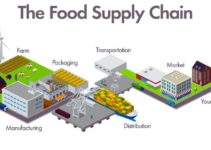Pharmaceutical Industry engages in various processes and phases ranging from discovering, manufacturing, sourcing, researching, and marketing new drugs and medicines for patients. The objective is to cure people, stop the spread of disease, and fix the symptoms of ill people. Today, we’ll discuss the value chain analysis of Pharmaceutical Industry; primary and supporting activities in the process of value chain analysis Example Company. They are inbound and outbound logistics, operations, marketing, and customer service; infrastructure, HRM, technology, and procurement as an application of the value chain analysis process.
Key Stakeholders of Pharmaceutical Industry
- Packaging companies
- Medicine manufacturer
- Pharmacists
- Healthcare providers
- Wholesale distributors
Laws and regulations relevant to the Pharmaceutical Industry
- Safety standards and protocols
- Testing of drugs and medicines
- Marketing of drugs
- Efficacy
- Trademark
- Patents
Top Brands in Pharmaceutical Industry
- Novartis
- Abbvie
- Merck & Co
- Eli Lilly and Company
- Takeda
- GSK
- Roche
- Johnson & Johnson
- Pfizer
- AstraZeneca
- Sanofi
- Bristol Myers Squibb
- Amgen
- Bayer
- Gilead Sciences
The Value chain analysis of Pharmaceutical Industry would analyze the primary and supporting activities in the process of value chain analysis. They’re inbound and outbound logistics, operations, marketing, and services; infrastructure, HRM, technology, and procurement. Here’s Pharmaceutical Industry value chain analysis company example as follows;
Value Chain Analysis of Pharmaceutical Industry
Let’s discuss the primary and supporting activities involved in the process of value chain analysis of Pharmaceutical Industry. It is an application of value chain analysis based on Porter’s model; some of the key elements and components of value chain analysis are as follows;
Primary Activities of Pharmaceutical Industry
Some of the five main primary activities in the value chain analysis of Pharmaceutical Industry are as follows;
Inbound Logistics of Pharmaceutical Industry
I-Sourcing Raw Supplies
The inbound logistics process of pharmaceutical industry starts with sourcing herbs, raw materials, and other supplies for the production and manufacturing of drugs. Pharmaceutical companies employ various channels and networks to find and procure raw supplies from various regions across the world. However, the objective is to find the most cost-efficient source of raw material.
II-Expired Products from Distributors
There are many drugs and medicines that become expired on the shelves before reaching the end consumer. The retailers and distributors send them back for relabeling, repackaging, and remanufacturing to increase the expiration date.
III-Delivering Raw to Production Facility
After sourcing the raw materials and supplies, companies need to deliver the raw supplies to the production and manufacturing facilities on time. It would help the pharmaceutical companies to keep running their scheduled productions to satisfy the customer demands.
Outbound Logistics of Pharmaceutical Industry
I-Warehousing
After production and manufacturing of drugs and medicines; Pharmaceutical companies send their finished products to the different warehousing facilities in various regions across the globe. They would further distribute the packaged medicines to retail pharmacies, hospitals, and clinics to serve the end consumers.
II-Distribution Network
The strong on-ground distribution network plays a key role in the sale of medicine and drugs. In fact, there are various 3rd party logistics channels and distributors available that provide logistics and distribution services to Pharmaceutical companies. The bigger and larger the distribution network; there more chances of their growth and success and delivering the medicines to the end consumers.
Operations of Pharmaceutical Industry
I-Machinery Maintenance
Pharmaceutical companies perform their manufacturing operations through sophisticated tech machinery and robots. The mechanical robotic arms and machinery need regular update of their software and maintenance to smoothly perform their operations.
II-Patent License Renewal
The other main operation of Pharmaceutical companies is to apply for renewal of patents and licenses. This is because Pharmaceutical companies deal with hundreds of drugs and medicines; they have different license expiration dates. The operational managers and the legal advisor should pay close attention to the license renewal time and dates.
III-Ordering Supplies
In order to keep running their production and manufacturing operations smoothly, Pharmaceutical companies should place orders for the raw material supplies. It would help them to keep producing and manufacturing medicines and maintaining the demand and supply of the market.
Marketing & Sales of Pharmaceutical Industry
I-Medical Sales Rep
Pharmaceutical companies often promote and market their medicine and drugs through medical sales reps. They approach various doctors and medical practitioners and request them to prescribe their drugs and medicines to the patients whenever they come across relevant patients. It has turned out to be the most effective marketing approach in the Pharmaceutical Industry; that’s why it is very highly popular worldwide.
Services of Pharmaceutical Industry
I-Customer Loyalty
In order to earn the loyalty of customers, Pharmaceutical companies regularly contact retail distributors, pharmacies, clinics, and hospitals in case they need more stock of drugs and medicines. They also provide the service of receiving the on-shelf expired medicines and replacing them with new ones by charging a particular price.
Supporting Activities of Pharmaceutical Industry
Some of the five main supporting activities in the value chain analysis of Pharmaceutical Industry are as follows;
Infrastructure of Pharmaceutical Industry
Pharmaceutical companies heavily rely on the well-developed infrastructure for the smooth running of the operations. It comprises a wide a wide of range of systems, processes, and operations from the production of medicines to the distribution and sale of drugs to the patients and end consumers. However, some of the main elements of Pharmaceutical Company’s infrastructure are as follows;
- Planning and controlling system
- IT infrastructure for the production of goods
- Standardization of hardware and software
HRM of Pharmaceutical Industry
Pharmaceutical Industry employs millions of people across the world. They perform various roles like doctors, nurses, lab technicians, medical sales reps, pharmacists, and many others. However, the human resource department plays a key role in the Pharmaceutical Industry; some of the key functions they perform are as follows;
- Employee recruitment
- Payment and incentives
- Employees training
- Promotion and demotion
Technological Development of Pharmaceutical Industry
Pharmaceutical companies invest billions of dollars in research and development for the innovation of the latest medicines and drugs in order to gain a competitive edge. After innovating the drugs, the medicine goes through various stages of testing and trials before receiving approval from the FDA. The technological development is highly significant for the growth and development of Pharmaceutical Industry.
Procurement of Pharmaceutical Industry
The procurement process of Pharmaceutical companies comprises a wide range of processes like; purchasing machinery, equipment, raw supplies, services, and others. Without procurement processes, Pharmaceutical Industry can’t perform its daily routine operations.
Conclusion: Pharmaceutical Industry Value Chain Analysis Example Company | Application of Value Chain Analysis Process
After an in-depth study of the pharmaceutical industry; we have realized that Pharmaceutical Industry is the world’s leading and growing business venture. If you are learning about the Pharmaceutical Industry value chain analysis example company; then you should keep in mind the abovementioned primary and supporting activities. They’re inbound and outbound logistics; operations, marketing and sales, and services; infrastructure, procurement, HRM, and technological development as an application of the value chain analysis process.
Ahsan is an accomplished researcher and has a deep insight in worldly life affairs. He goes Live 3 days a week on various social media platforms. Other than research writing, he’s a very interesting person.


